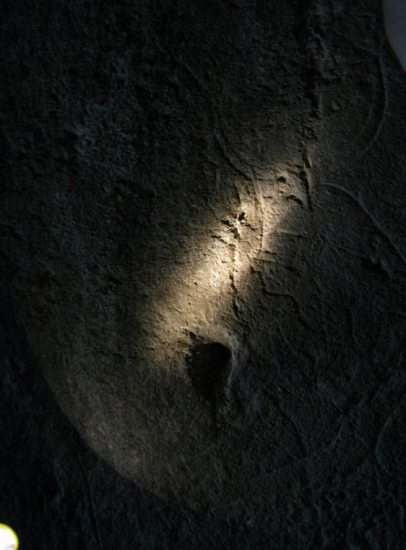PAP Science & Scholarship in Poland
Source - http://www.naukawpolsce.pap.pl/en/news/news,400863,polish-archaeologists-found-tombs-dating-back-four-thousand-years-in-egypt.html

Study of the tomb in Gebelein. Photo by W. Ejsmond
A team of Polish archaeologists discovered tombs from the early second millennium BC and unknown pharaonic carvings in Gebelein in Upper Egypt. It was a part of rescue studies associated with the devastation caused by the widening range of fields and settlements.

Gebelein view from the east. Photo by W. Ejsmond
Gebelein is a complex of archaeological sites approximately 30 km south-west of Luxor. More than 5 thousand years ago it was a capital of one of the proto-states, which preceded the state of the pharaohs. The first European archaeologists came here at the end of the nineteenth century, but over the last few decades scientists seldom studied this area and did not publish the results of their research. Therefore, it is not well recognized. The name "Gebelein" means "two hills" in Arabic. It comes from the characteristic element of the local landscape - two hills. On the east hill there once was a temple of the goddess Hathor and a fortress.
"At the foot of the rocky hill we tracked down another place of worship of the goddess Hathor - sanctuary carved into the rock, with reliefs preserved on the walls. So far, the site has only been mentioned in the scientific literature and basically no one knows anything about it" - explained Wojciech Ejsmond, leader of the expedition.

Inscription in the shrine of Hatho. Photo by W. Ejsmond
Hathor was the goddess the ancient Egyptians usually associated with singing, dancing, love, and death. However, scientists know little about the cult of Hathor in Gebelein, the location of the oldest known temple of the goddess.

The face of the goddess Hathor in the rock shrine. Photo by W. Ejsmond
"We hope that the research that we want to carry out next year, especially reading the texts carved on the walls of the sanctuary, will provide us with more information on this topic" - added Ejsmond.

Relief depicting the goddess Hathor on the throne. Photo by W. Ejsmond
The second place where the archaeologists focused their efforts was part of an ancient necropolis, threatened with destruction by modern activities related to expanding range of fields and settlements. They inventoried and documented nearly 200 tombs carved into the rocks. Among them were also previously unknown tombs of the high dignitaries from the time of the pharaohs. Their contents, including vessels associated with the cult of the grave of the deceased and sarcophagi fragments, were in the surveyed necropolis. The objects were located and documented also using mobile GIS (Geographical Information Systems).
In order to better survey the area, archaeologists used satellite images in near-infrared. In conjunction with the GIS database it allowed the team to identify the remains of an ancient irrigation system and probably other ancient structures.
The Polish team also searched for old engravings and inscriptions. For this purpose, they used RTI - Reflectance Transformation Imaging, which involves taking a series of pictures of the surface with the flash and changing the direction of the light when taking each picture. Thus obtained images are then overlaid in a specialized computer program into one image, allowing to manipulate the light and spot patterns or characters.
"RTI worked perfectly. This technique allowed us to notice new elements of one of the documented depictions and correct the image of a depiction of a hunter which is probably more than five thousand years old" - said Ejsmond.
"Gebelein surprised us with the abundance and variety of archaeological objects. Represented here are almost all kinds of archaeological sites found in Egypt, dated to all periods of the history of civilization of the Pharaohs" - concluded Ejsmond.
This is only the beginning of a larger project aimed at documenting all the sites in the area and their publication. Polish expedition in Gebelein, operating under the auspices of the Centre of Mediterranean Archaeology of the University of Warsaw, took place in February. The team consisted of students and staff of the University of Warsaw and the Jagiellonian University, and the Institute of Mediterranean and Oriental Culture PAS. Expedition members, in addition to Wojciech Ejsmond, included archaeologists Julia Chyla, Cezary Baka, Dawid F. Wieczorek and Piotr Witkowski, as well as geologists from the University of Warsaw: Aleksandra Stachowska, Marek Wnuk and Michał Madej.